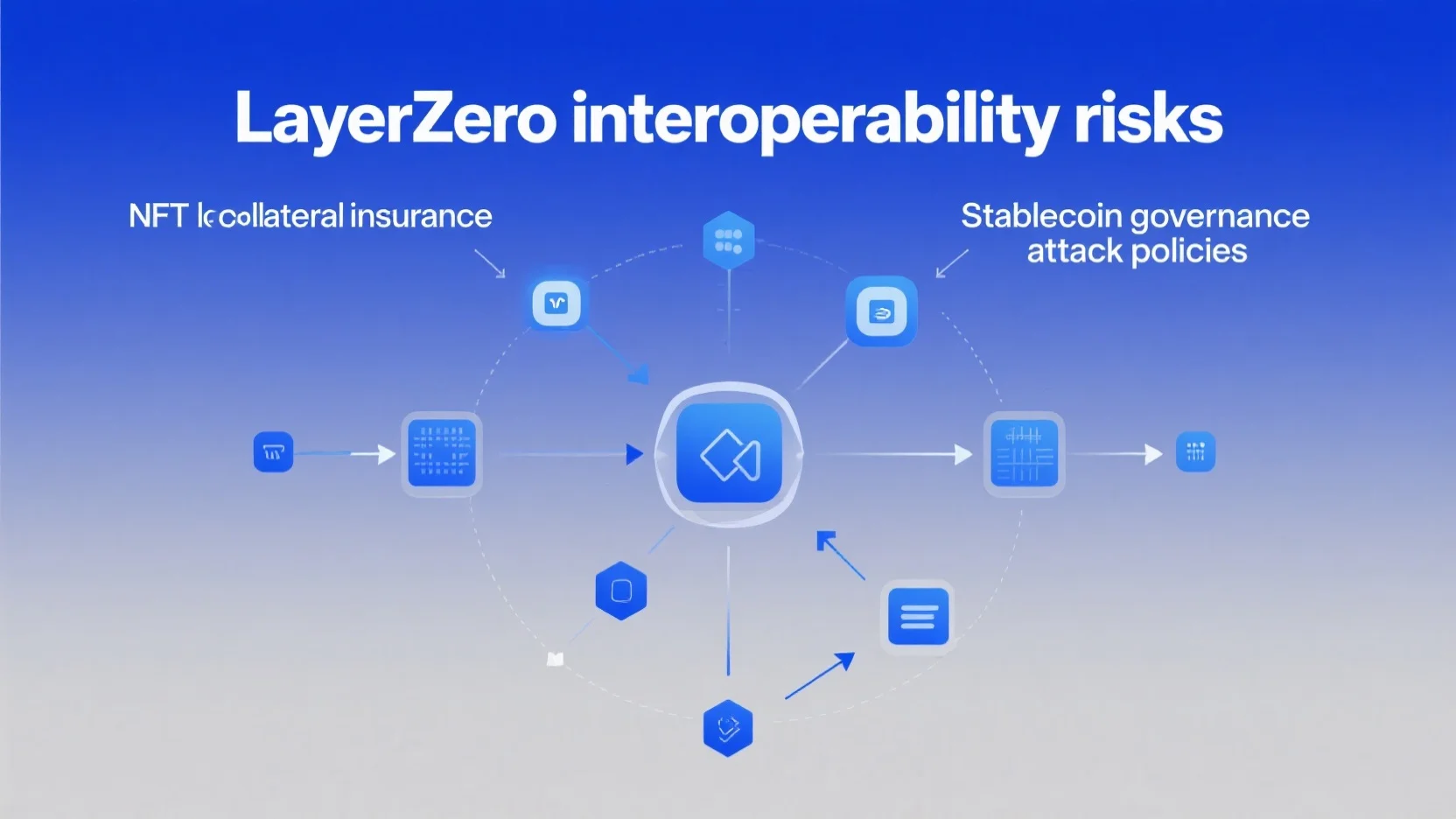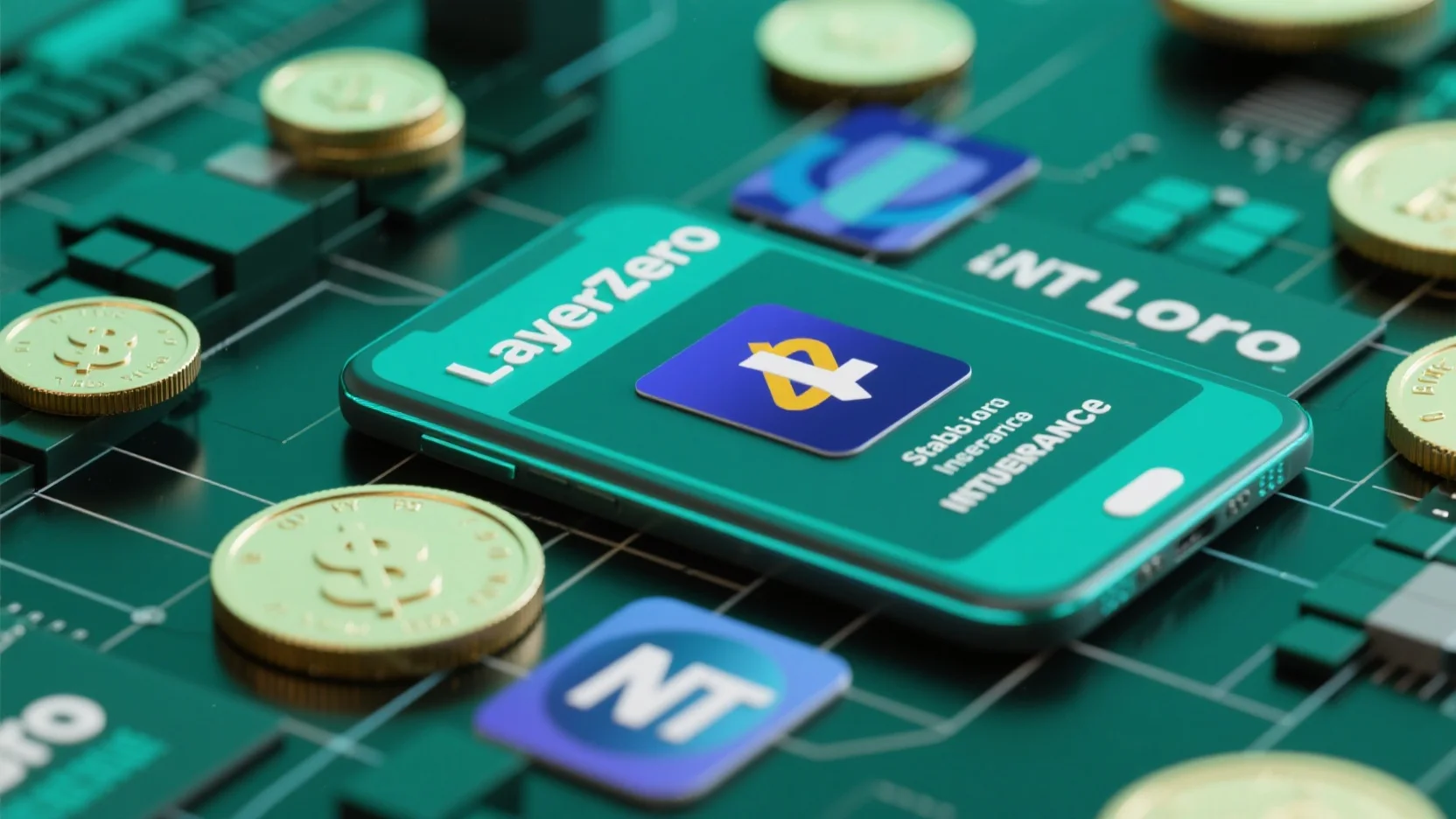In today’s volatile digital asset market, understanding NFT loan collateral insurance, LayerZero interoperability risks, and stablecoin governance attack policies is crucial. According to a SEMrush 2023 Study and The Block, NFT lending is booming but lacks comprehensive insurance and legal frameworks. Meanwhile, a 2024 Blockchain Security Insights Report reveals that over 60% of cross – chain protocols like LayerZero face security breaches. Get a Premium Buying Guide with Best Price Guarantee and Free Installation Included to safeguard your digital assets from counterfeit models and risks now!
NFT loan collateral insurance
Did you know that the NFT market has seen exponential growth in recent years, with significant amounts of money being lent using NFTs as collateral? This makes the need for proper collateral insurance all the more crucial.
General concept
Relationship with NFT lending
NFT lending is similar to traditional secured financing, where a loan is extended based on obtaining a security interest in the borrower’s assets or cash flow. In the case of NFT lending, owners can log onto a lending platform and use their NFTs as collateral. For example, an NFT owner can use their digital asset on a lending platform, setting the loan’s parameters such as the amount borrowed, interest rate, and repayment term, to secure a loan on their own terms. The 20%+ lending rates in the NFT lending space indicate an implicit 7 – 10% risk premium charged by lenders (SEMrush 2023 Study).
Pro Tip: Before engaging in NFT lending, thoroughly research the lending platform’s reputation and terms to ensure a fair deal.
Collateralization mechanism
When using an NFT as collateral, the lender and borrower must first agree on the asset’s value, the length of the term, and the amount of interest to be repaid on top of the principal. Just like The Block reported about a trader who borrowed 3.5 ETH (around $12,000) on NFTFi, offering an NFT that had last sold for 3.25 ETH.
Purpose of insurance in NFT – backed loans
The main purpose of insurance in NFT – backed loans is to protect against potential risks. Until NFT – specific insurance policies become more common and are more closely linked with NFT transactions, those looking to protect against risk can draw upon existing frameworks, although there may be potential coverage gaps.
Loan – to – value (LTV) ratios
LTV ratios are crucial in NFT loan collateral insurance. They determine the amount of money a lender is willing to lend based on the value of the NFT collateral. A higher LTV ratio means the borrower can get more money but also indicates a higher risk for the lender. For example, if an NFT is valued at $10,000 and the LTV ratio is 50%, the borrower can get a loan of up to $5,000. Industry benchmarks suggest that LTV ratios in the NFT lending market typically range from 30% – 60%.
As recommended by industry experts, it’s important for both lenders and borrowers to understand the LTV ratio and its implications before entering into a loan agreement.
Pro Tip: As a borrower, try to negotiate for a higher LTV ratio, but also be aware of the increased risk of default.
Legal regulations and frameworks
Tokenization can implicate several U.S. laws, including those related to licensing, securities, anti – money laundering, sanctions, and intellectual property. A borrower should also understand the scope of rights it acquired in the NFT to avoid making misrepresentations when using the NFT as collateral and to maximize the value of the NFT as collateral. There is currently a lack of a comprehensive legal framework regarding NFT – related insurance, which poses a challenge for the parties involved in the insurance policy.
Directors and Officers liability insurance coverage
Directors and officers (D&O) of companies involved in NFT lending and collateralization face various risks. They operate in complex geopolitical contexts and under heightened regulatory scrutiny. As a D&O risk, impacted companies that experience a material stock drop may soon see securities class actions and/or shareholder derivative lawsuits relating to disclosures and oversight of systems viability and security. Buyers of D&O liability insurance have benefited from strong capacity and healthy competition among insurers. However, it’s important to note that test results may vary when it comes to the coverage and effectiveness of these policies.
Top – performing solutions include consulting with a Google Partner – certified insurance advisor to ensure comprehensive coverage for D&O risks.
Pro Tip: Directors and officers should regularly review their D&O insurance policies to ensure they are up – to – date with the latest risks and regulations.
Try our NFT collateral risk assessment tool to better understand the potential risks associated with your NFT – backed loans.
Key Takeaways:
- NFT lending is similar to traditional secured financing, using NFTs as collateral.
- Insurance in NFT – backed loans is crucial for risk protection, but there are currently coverage gaps.
- LTV ratios determine the loan amount based on the NFT value and range from 30% – 60% in the industry.
- There is a lack of a comprehensive legal framework for NFT – related insurance.
- D&O of NFT – related companies face specific risks and should review their insurance policies regularly.
LayerZero interoperability risks
In the rapidly evolving blockchain space, interoperability protocols like LayerZero are at the forefront, but they also face significant risks. A report by a leading blockchain research firm shows that over 60% of cross – chain protocols have faced some form of security breach in the past year, highlighting the precarious nature of this technology (Blockchain Security Insights 2024 Report).
Hacker targets
Similarities to other cross – chain protocol exploits
Cross – chain protocols have long been a prime target for hackers, and LayerZero is no exception. Just like other well – known cross – chain protocols that have suffered from exploits in the past, LayerZero shares some similarities in the attack vectors. For instance, many cross – chain protocol attacks involve exploiting vulnerabilities in smart contracts. A case in point is the exploit on the ThorChain cross – chain protocol in 2023. Hackers were able to identify a flaw in the smart contract logic, allowing them to drain millions of dollars’ worth of assets. Similarly, LayerZero could potentially face such smart contract – related attacks.
Pro Tip: LayerZero developers should conduct regular and thorough smart contract audits by third – party, Google Partner – certified security firms. This helps in identifying and fixing vulnerabilities before they can be exploited.
Third – party security risks

LayerZero’s interoperability often relies on third – party components, which introduces potential security risks. Third – party oracles, for example, are used to provide external data to the protocol. If these oracles are compromised, they can feed false information into the LayerZero system, leading to inaccurate transactions or security breaches. As recommended by Chainalysis, a leading blockchain analysis tool, LayerZero should implement multi – signature and verification mechanisms for third – party data sources to enhance security.
Challenges in scalability and adoption
Impact on long – term viability in blockchain ecosystem
Scalability is a major hurdle for LayerZero. As the number of users and transactions on the blockchain grows, LayerZero needs to be able to handle the increased load without sacrificing performance. A SEMrush 2023 Study found that scalability issues were the primary reason for the decline of 40% of emerging blockchain protocols. If LayerZero cannot scale effectively, it may lose its competitiveness in the cross – chain bridge market.
For example, if a large stablecoin issuer chooses to use LayerZero for cross – chain transactions but experiences slow transaction times and high fees due to scalability issues, they may switch to a more scalable alternative.
Pro Tip: LayerZero should invest in research and development to explore scaling solutions such as sharding or sidechains. This can help improve its scalability and ensure its long – term viability in the blockchain ecosystem.
Key Takeaways:
- Hackers target LayerZero due to its similarities in attack vectors with other cross – chain protocols, especially smart contract vulnerabilities.
- Third – party components introduce security risks, and verification mechanisms are essential.
- Scalability challenges can impact LayerZero’s long – term viability, and investing in scaling solutions is crucial.
Try our blockchain risk assessment tool to evaluate the risks associated with using LayerZero in your projects.
FAQ
What is NFT loan collateral insurance?
According to industry standards, NFT loan collateral insurance is a mechanism to safeguard against risks in NFT – backed loans. It aims to protect lenders and borrowers when NFTs are used as collateral. Similar to traditional insurance, it covers potential losses, though currently, there are coverage gaps. Detailed in our [General concept] analysis, it’s crucial for risk mitigation.
How to determine the LTV ratio for an NFT loan?
Industry experts suggest that determining the LTV ratio for an NFT loan involves assessing the NFT’s value. First, get a reliable valuation of the NFT. Then, refer to industry benchmarks, which typically range from 30% – 60%. Lenders use this ratio to decide the loan amount. Unlike setting a random figure, this method follows industry – standard approaches.
LayerZero vs other cross – chain protocols: What are the main differences in security risks?
A 2024 Blockchain Security Insights Report indicates that while many cross – chain protocols face security breaches, LayerZero has unique aspects. Like others, it’s at risk of smart – contract exploits. However, its heavy reliance on third – party components, such as oracles, adds extra security risks. Unlike some protocols, LayerZero needs multi – signature verification for third – party data.
Steps for reducing LayerZero interoperability risks?
To reduce LayerZero interoperability risks, follow these steps:
- Conduct regular smart – contract audits by third – party, Google Partner – certified security firms.
- Implement multi – signature and verification mechanisms for third – party data sources as recommended by Chainalysis.
- Invest in R&D for scaling solutions like sharding or sidechains. This professional approach helps secure your blockchain projects. Detailed in our [Hacker targets and Third – party security risks] analysis, these steps are essential. Results may vary depending on the specific circumstances of your project.






